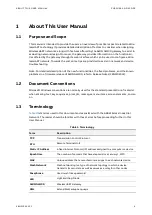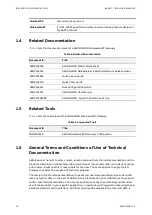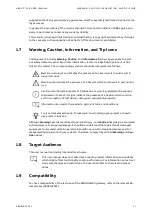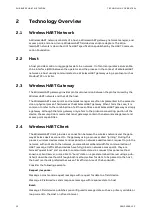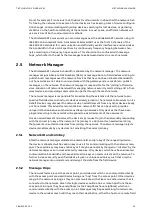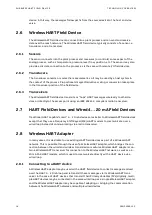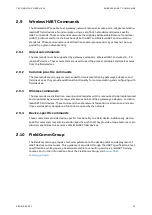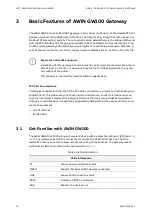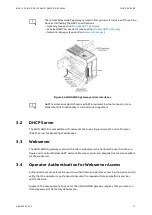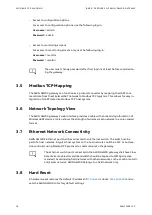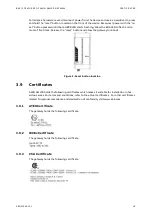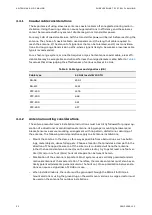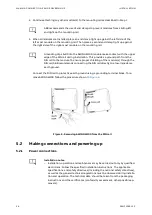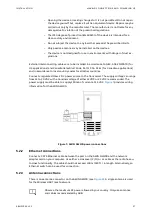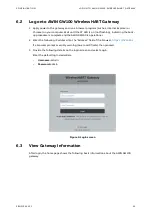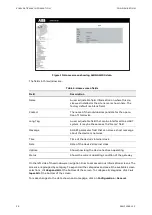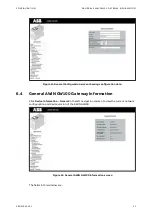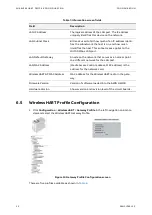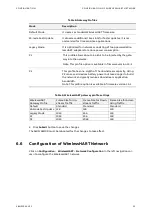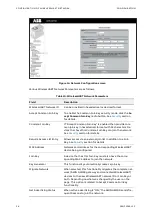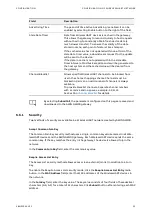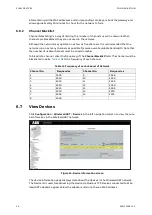
ANTENNAS A ND CAB LING
WIRELES SHART S YSTEM PLA NNING
22
3BNP1029 12 C
4.4.1
Coaxial cable considerations
The importance of using a low-loss antenna coaxial cable is often neglected during radio in-
stallation. Using the wrong cable can cause huge reductions in efficiency, and these losses
cannot be recovered with any amount of antenna gain or transmitter power.
For every 3 dB of coaxial cable loss, half the transmitter power will be lost before reaching the
antenna. The choice of coaxial cable to use depends on: 1) the length of cable required to
reach the antenna, 2) the amount of signal loss that can be tolerated, and 3) cost considera-
tions. For long-range transmission paths, where signal is likely to be weaker, a low-loss cable
type is recommended.
For a short-range system, or one that requires only a short antenna coaxial cable, a less effi-
cient cable may be acceptable and will cost far less than large diameter cable. Refer to
for values that allow judging the effectiveness of various cables at 2.4 GHz.
Table 5: Cable types and signal loss (dB)
Cable type
2.4 GHz loss (dB/100 ft.)
RG-58
25.01
RG-213
12.51
PFP-240
12.76
PFP-400
6.68
PFP-500
5.41
PFP-600
4.37
4.4.2
Antenna mounting considerations
The antenna manufacturer’s installation instructions must be strictly followed for proper op-
eration of a directional or omnidirectional antenna. Using proper mounting hardware and
bracket ensures a secure mounting arrangement with no pattern distortion or detuning of
the antenna. The following recommendations apply to all antenna installations:
–
Mount the antenna in the clear, as far away as possible from obstructions such as build-
ings, metal objects, dense foliage, etc. Choose a location that provides a clear path in the
direction of the opposite antenna. If the antenna is co-located with another antenna
(other than second antenna connector on the same radio), try to get at least one foot ver-
tical (31cm) or one foot (31cm) horizontal separation between the two.
–
Polarization of the antenna is important. Most systems use a vertically polarized omnidi-
rectional antenna at the master station. Therefore, the remote antennas must also be ver-
tically polarized (elements perpendicular to the horizon). Cross-polarization between sta-
tions can cause a signal loss of 20 dB or more.
–
When installed indoors, the radio must be grounded through the DIN rail for DIN rail-
mount versions or using the ground lug on the wall-mount versions. A surge arrestor must
be used on the antenna for outdoor installations.
Summary of Contents for AWIN GW100
Page 1: ... ENERGY INDUSTRIES ABB Wireless Industrial Network AWIN GW100 User Manual ...
Page 2: ......
Page 8: ......
Page 10: ......
Page 12: ......
Page 68: ... Visit us www abb com oilandgas Document Number 3BNP102912 Rev C ...

